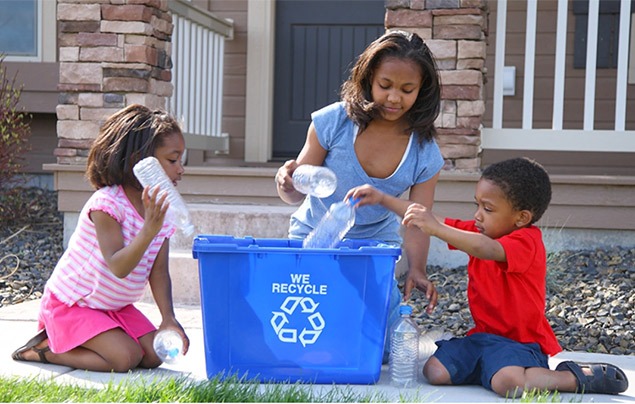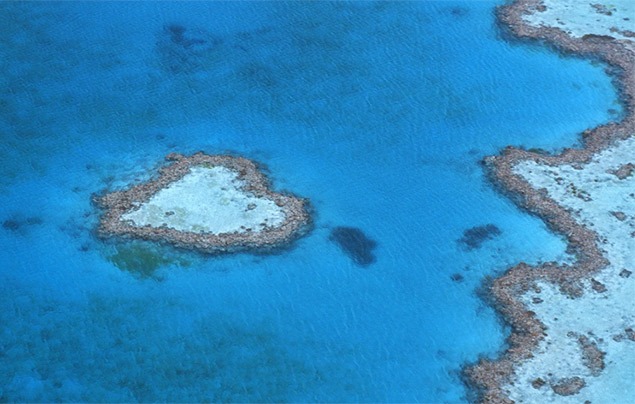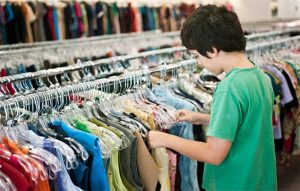20 ways to save the Earth as a family
Check out these top tips to look after our planet!
Climate change news can be overwhelming for kids – and their parents. It might feel like personal actions can’t help us save the Earth. But they can!
It’s true that sweeping collective action is needed to curb climate change, but small adjustments by people help, too. Plus, by taking action to protect the planet, you can help your children feel empowered in the face of these global problems.
Start with these tips to get the whole family working to save the Earth…
1. Recycle right
We get it – recycling can be complicated! Should you recycle plastic bottles with the cap on or off? What about a box with a plastic window? Each facility has different technology and systems, so familiarise your family with your area’s recycling requirements.
Even better, book a trip to visit your local household waste recycling centre, or check out an online tour, to show kids how it all works. Once they’ve watched tons of cardboard and paper fly up over hundreds of rotating discs, they’ll never look at the recycling bin the same way again.
2. Sharing is caring
Lower your family’s carbon footprint and cut down on plastic waste by sharing stuff instead of buying new items. Bring your children to the local library to check out new books and movies, encourage them to swap toys and games with their friends, and talk to other parents in your area about trading kids’ clothes as they age out of certain sizes.
3. Read, read, read!
Reading magazines and books about our natural world will inspire your family to become planet ambassadors, dedicated to helping Earth. With a National Geographic Kids subscription, your kids will get to know animals from all over the planet every month – and find out how to care for them.
4. Best pet
If you’re considering adopting an exotic pet like a tortoise or parrot, first do some research as a family. Is it possible this animal has been taken from the wild? If so, consider a different pet, since taking animals from their natural habitats can threaten wild populations.
Once you’ve chosen something, thoroughly research the care the pet needs – especially how long it could live. And if your family can no longer care for the animal, take it to a rescue organisation. Pets released into the wild can become an invasive species, harming native wildlife and their ecosystems.
5. Unplug
Don’t worry – we don’t mean taking a break from your phone. We’re talking about the charger. Chargers that remain plugged in to the wall can suck energy even when the device is turned off, or not plugged in at all. Ask your kids to remind you to unplug chargers when they’re not in use, as well as switching off power strips for TVs and lamps. We bet they’ll remember more than you will!
6. Precious paper
About 15 billion trees are cut down each year, many to make paper. Conserve the paper in your home by giving your children scrap paper for colouring and up-cycling old magazines to make party decorations and other crafts. Once it’s used, add the rubbish to a compost bin rather than throwing it away. Plus, check out local tree planting opportunities to give back to our amazing Earth.
7. Door dash
An open door to air-conditioned building can let about 2.2 tons of carbon dioxide escape over one summer – about as much as a car on a 5000-mile road trip. As your family visits shops and restaurants, ask to speak to a manager about closing the door if it’s ajar. You’ll be a model for your kids, showing what it looks like to (kindly) stand up for what you believe in.
8. Fresh fruit
Before taking your children to the shops, ask them to look up which fruits and vegetables are in season. Even better: Take a family trip to a farmers market so kids can talk to the experts about their food. Seasonal, local food cuts down on the energy needed to grow and transport it, plus the trip might encourage picky eaters to try something new.
9. App it
Can’t get your kids off their phones? Put their screen time to good use by tracking or reporting the litter they spot in an app like Marine Debris Tracker. This data is sometimes used to create new regulations that combat pollution.
10. Bottle bringer
Let your children pick out their own reusable water bottle and decorate it however they’d like. Then bring those water bottles everywhere! It’ll save you some cash, plus keeping track of their bottles will help teach your kids about responsibility. Here are some other eco-friendly ideas for schools, that can help kids make a difference in their classrooms.
11. Plastic busters
Does your favourite local restaurant hand out plastic straws? Or does your area’s ice cream van use those tiny plastic spoons with their tubs? Empower your kids to request no straws when they order their drink or ask for broken pieces of waffle cones instead of plastic spoons, to cut down on waste and help save our seas. If your youngsters are super brave, help them ask the server or manager to change the policy to help save the Earth. (Here’s a guide to help them get started!)
12. Clean kicks
Before and after going on a family hike, have everyone clean the bottoms of their shoes, because the mud caked in your trainers can contain the seeds of invasive plants. It’s especially important to be careful when visiting a protected area, island or other vulnerable habitat.
13. Kid scientists
Instantly transform your kids into scientists by signing up for a citizen science project that tags, tracks or identifies animals. Just snapping a photo of a butterfly and uploading it to a site like iNaturalist can help biologists learn how these animals are adapting to a changing world. Sign up for the National Geographic Kids newsletter for activity ideas direct to your inbox, along with positive news, top tips and more.
14. Stay leashed
If you’re bringing your family dog on a walk, always keep it on the leash. Dogs sometimes hunt or chase wildlife, and they can stress local animals just by running through their habitats.
15. Back where you found it
It’s fun to search for slugs under logs and crustaceans under rocks – but teach your children to always put these things back. Rocks, leaves and logs are animals’ homes, and moving them can upset the fragile ecosystem.
16. Purposeful trip
Plan a full family holiday or just an afternoon jaunt to a wildlife reserve, national park or bird sanctuary. These places are more likely to receive funding to stay open if more people visit them.
Plus, make sure to pack binoculars on your next family outdoor adventure. They’ll allow your children to observe wildlife without disturbing the animals, which can stress them out. This also encourages kids to stay on the path so that they don’t damage the ecosystem.
17. Animal awareness
Be suspicious of experiences that promise up-close interactions with wild animals like big cats, elephants, sloths and monkeys. Often these animals have been snatched from the wild and are suffering in captivity.
18. Safe souvenirs
On holidays, avoid souvenirs or other items made from animal parts like scales, teeth, feathers, tortoise shells, seashells, coral and especially ivory. Instead, take your kids to local bazaars where you can meet the artists and search for items made of materials like fabric, aluminium cans or magazine paper.
19. Handy hotels
Many hotels offer guests the chance to reuse towels instead of sending them down to be cleaned after each use. Save the Earth by taking advantage of this eco-friendly policy and asking your family to hang up their towels after each use. (And maybe they’ll even start doing it home without being asked!)
20. Fall in love
If we’re going to save the Earth, first we need to remember why we care. No matter where you travel, you can draw your kids’ attention towards a beautiful flower or an interesting bird. Talk to your kids about why the planet is worth protecting – then do all you can to help save it.





















LEAVE A COMMENT
THANK YOU
Your comment will be checked and approved shortly.
WELL DONE,
YOUR COMMENT
HAS BEEN ADDED!
COMMENTS
CUSTOMIZE YOUR AVATAR